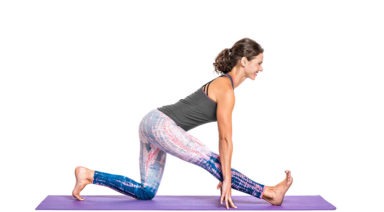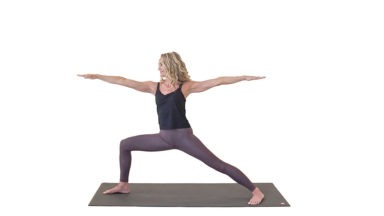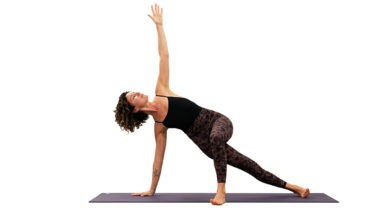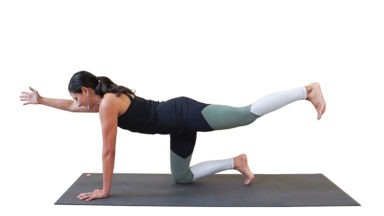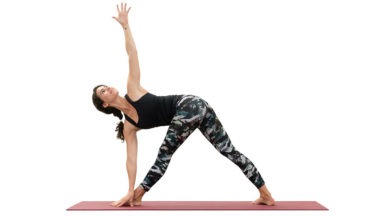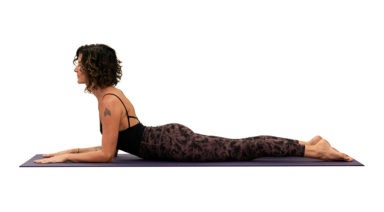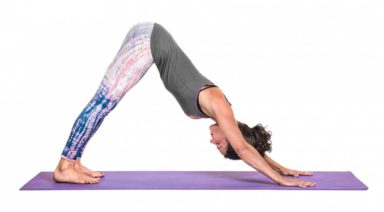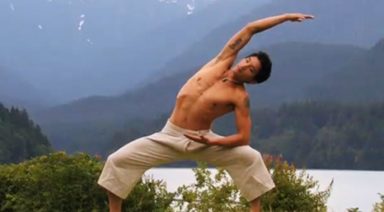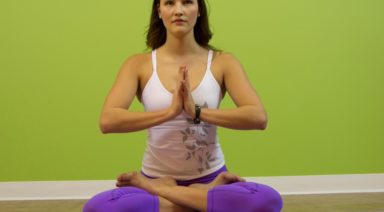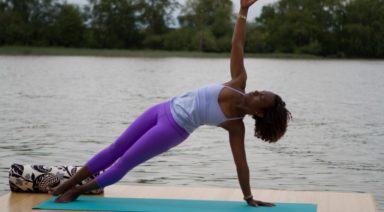Discipline & Surrender: The Art of Down Dog
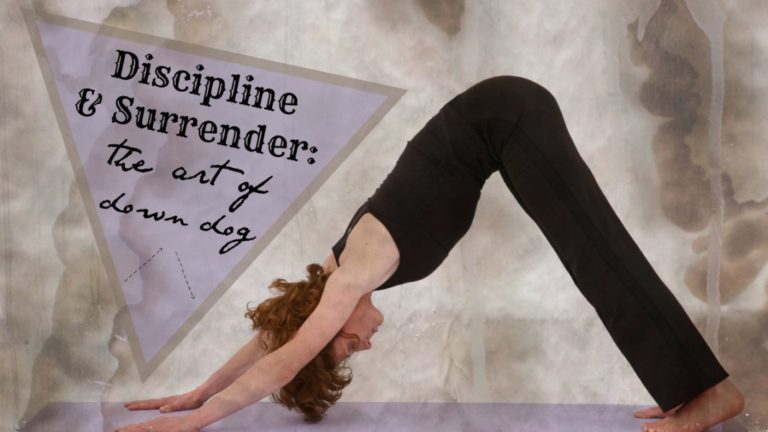
I’m a yoga teacher who’s been teaching for over 20 years and doing down dog every day. So technically I can do the pose, but because of a pinched nerve in my elbow I’ve developed a problem akin to tennis elbow and it hurts like hell.
For years I’ve heard one student after another complain about down dog. They tell me it’s too hard, it’s boring and it sometimes hurts the hands and the feet. I would remind them about limitation, relaxing and letting go. “Breathe,” I would say.
I love down dog. It reminds me to surrender every part of my body to the pose. It requires discipline to first get into the pose and then a sense of surrender to maintain it. I remind my students that such is down dog, such is life. It takes discipline to stick to your goals and surrender to maintain them.
What I love about down dog is that it’s a one-for-all pose, meaning that it requires the integration of the whole body. It stretches the muscles of the back of the legs, shoulders, the belly and the back. It strengthens the arms, relieves neck tension and offers some of the benefits of inverted poses, such as cleaning the internal organs and relieving tension. It can be done for a warm up or a cool down.
Patanjali, who organized the knowledge of yoga into The Yoga Sutras of Patanjali, understood down dog. His book compiles 196 sutras that are essentially a road map for life. The second sutra, if fully understood, is enough to understand yoga. The rest of the sutras only serve to explain. Basically the second sutra is about the modification of the mind or the balance between the two qualities of abhyasa and variragya or “discipline” and “surrender.” This is down dog.
These two qualities form the foundation of yoga. It’s the balancing and the blending of the two opposing forces of discipline (practice) and surrender (letting go) that create harmony. It’s precisely the physical discipline of moving into down dog and the letting go so as to maintain it: that is why I love down dog, and why I was so disappointed when my body would no longer allow me to embrace the pose.
Not to be one to give up, I saw my doctor who sent me to a physical therapist. For six weeks I worked to relieve the pain in my elbow so that I could return to the mat. It also took discipline to faithfully make time to see the physical therapist three times a week. It took a sense of surrender to let go and remain unattached to the outcome of my therapy. My focus was to establish that sense of balance between abhyasa and variragya.
This process of therapy was a discovery that called upon me to transcend my ego. I’ve always prided myself on being able to easily slip in and out of down dog. My body has always been strong, flexible and resilient. Now my body was tired and worn, and I had to let go of my self-imposed boundaries and admit that I too had my limitations. I’m the yoga teacher and I cannot do a down dog?! But like all things in life, this too shall pass. Everything changes. With time and a little rest my elbow improved, and before I knew it, I was back on the mat in down dog with my students.
But something changed. I no longer take for granted that my body will always respond with the discipline I impose. Sometimes we need to pull back and surrender to the flow of life, even if that flow is one that is not so pleasant. As I like to remind my students, everything has an element of good. We just need to surrender to it and quietly learn to accept. In that, we will discover a sense of discipline and the ability to surrender; and if truly understood, this is enough to understand yoga. The resting of my elbow, like the remaining sutras, simply served to instill in me the importance of balance and the modification of the mind.
Yoga Poses to Ease Digestive Discomfort

If you’re one of the many American who suffers from occasional digestive discomfort, yoga offers a natural way to get relief. Just as you would adapt your diet to address your needs, try including some of these poses into your regular practice.
Cat-Cow – Marjaryasana-Bitilasana
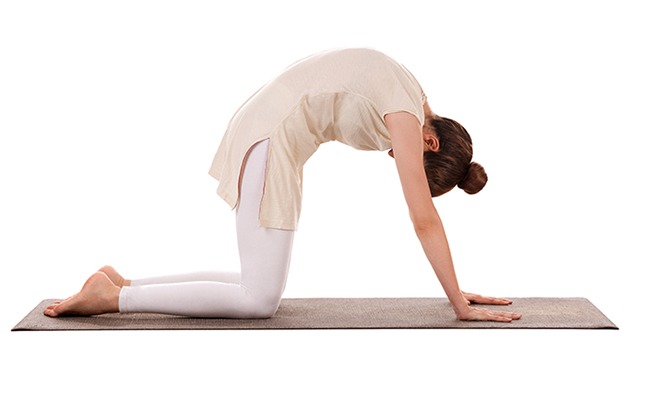
- Improves posture and balance
- Strengthens and stretches the spine and neck
- Stretches the hips, abdomen and bac
- Increases coordination
- Massages and stimulates organs in the belly, like the kidneys and adrenal glands.
- Relieves stress and calms the mind
Downward-Facing Dog – Adho Mukha Svanasana

- Calms the brain and helps relieve stress
- Stretches the shoulders, hamstrings, calves, arches, and hands
- Strengthens the arms and legs
- Relieves headache, insomnia, back pain, and fatigue
- Therapeutic for high blood pressure
- Helps prevent osteoporosis
Extended Puppy Pose – Uttana Shishosana

- Releases tension in you upper arms, shoulders, and neck
- Expands the whole front of your chest
- Stretches out your abdominal muscles
- Gently stimulates your back muscles in preparation for further backbends
- Opens up your hips and stretches your hamstrings
Bridge Pose – Setu Bandha Saravangasana
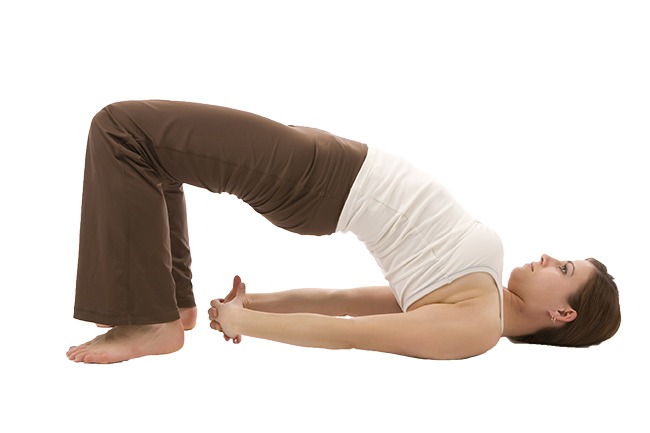
- Streches your chest, neck, spine, and hips
- Strengthens your back, buttocks, and hamstring muscles
- Calms your brain and central nervous system
- Alleviates stress and mild depression
- Massages abdominal organs and improves digestion/li>
- Relieves the symptoms of menopause
- Reduces anxiety, backaches, headaches, and insomnia
Wind-Relieving Pose – Ardha Pawanmuktasana
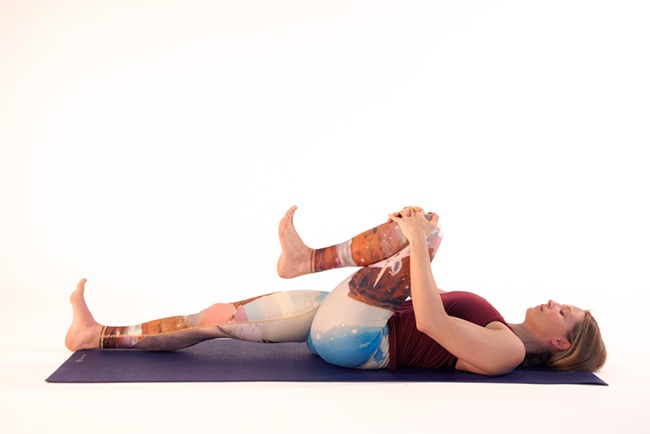
- Stretches the neck and back
- Pressure on the abdomen releases any trapped gases in the large intestine
- Blood circulation is increased to all the internal organs
- Relieves constipation
- Strengthens the back and abdominal muscles
- Massages the intestines and other organs in the abdomen
- Eases tension in the lower back








